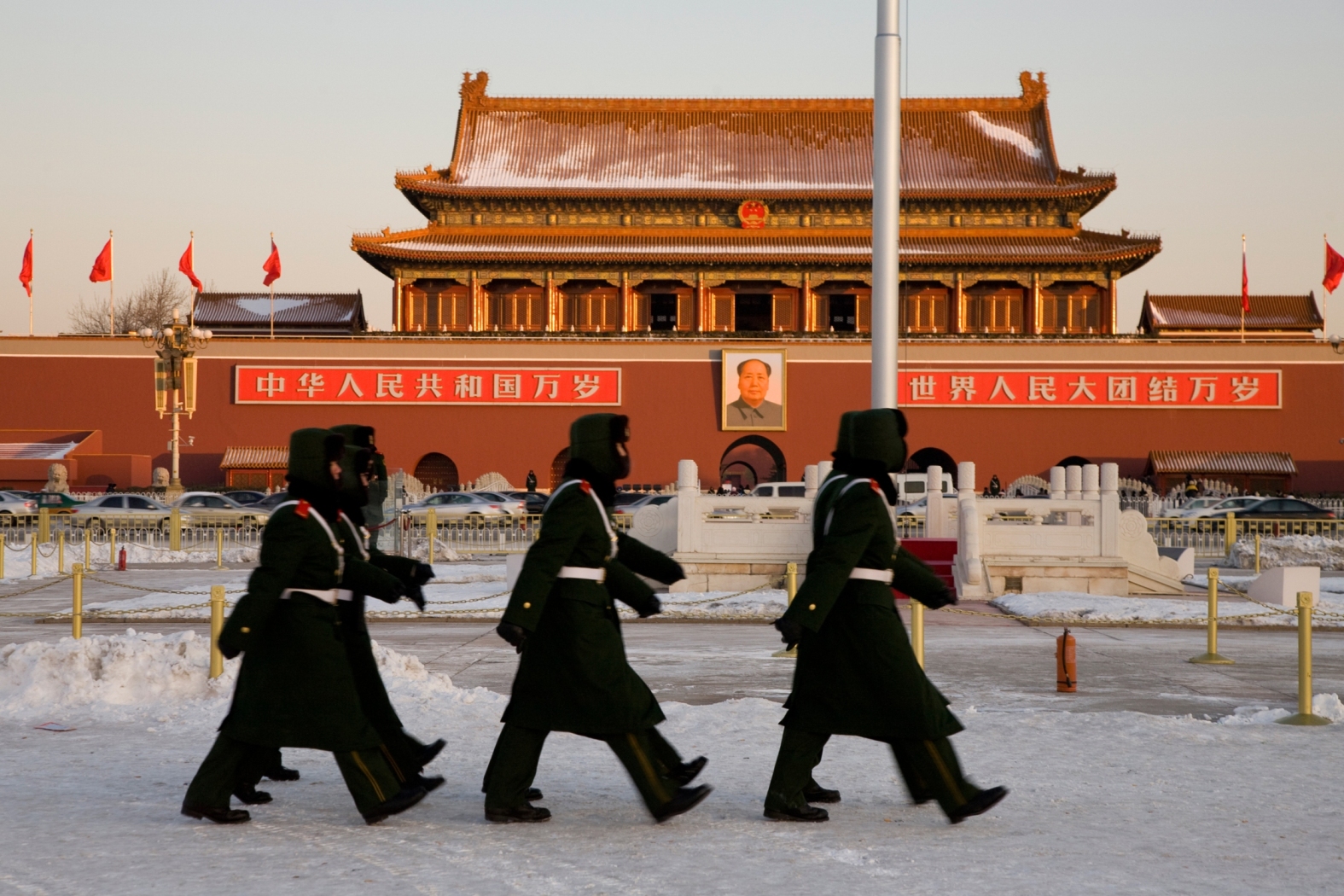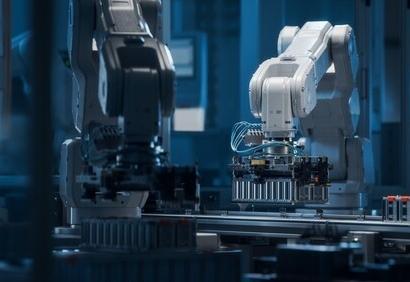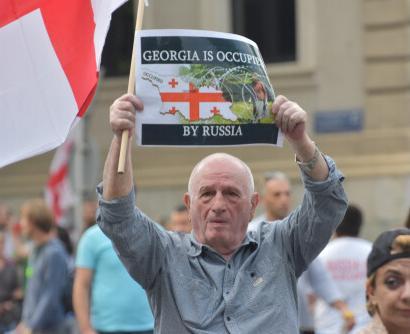Abstract: On the 16th October 1964, at 1500 hours local time, the People’s Republic of China became the 5th nation in the world to join the so-called nuclear powers club[1], successfully detonating a twenty-two-kiloton atomic fission bomb (‘Miss Qui’)[2] in the Taklamakan Desert. The astonishing fact is that Mao’s China managed to accomplish this feat of engineering and science in under a decade when the country was wracked with political and social turmoil from events like Mao’s disastrous Great Leap Forward or his Cultural revolution. So how did Mao’s troubled China successfully design and detonate a nuclear bomb, and how did it do so in such an abbreviated period so efficiently, especially when taking into account the deep ideological roots of Maoist China?
Problem statement: How to understand what made the Chinese nuclear program successful and efficient?
Bottom-line-up-front: The PRC’s success in their nuclear program is a clear result of unwavering political support from the party, efficient organisation at all levels, and the institutional protection of the program by the Central Committee and PLA from Mao’s Intervention.
So what?: The PRC’s success and efficiency should be taken as an example by analysts of what a well-organised, well-funded, and highly motivated country can achieve when it sets its will and resources towards nuclear proliferation.

Source: shutterstock.com/Bill Perry
“In order to achieve success rapidly in developing nuclear weapons, we must concentrate human, material, and financial resources…Any other projects for our country’s reconstruction will have to take second place.”
‘The Guidelines for developing nuclear weapons’ (July 1958)[3]
History of the Chinese Bomb
The Chinese nuclear program began in 1955 when Mao declared that China would seek the bomb during a politburo meeting. This decision may have surprised the members of the Politburo, considering Mao’s famous derision of the atomic bomb as nothing more than “paper tigers.”[4] However, Mao’s decision can be best explained by looking at the events in the run-up to it. During the Korean war (1950-1953), China was threatened by first the Truman and Eisenhower Administrations with the use of atomic weapons. Again, in 1954, during the First Taiwan Strait Crisis, the U.S. once more threatened China with the use of atomic weapons if they continued their aggressive campaign against the nationalists sheltering on the island of Taiwan.[5] In addition to the use of the nuclear card by the U.S., Gerald Segal highlights the fact that “China’s bitter experience with the Sino-Soviet defence alliance was perhaps the prime motive in Beijing’s search for its own nuclear capability.”[6] Ultimately though, Thomas Reed and Danny Stillman state that “if there was a last straw leading to his decision to go nuclear, the US-Taiwan treaty of December 1954 was probably it” as this seeming official recognition of the nationalist government in Taiwan by the U.S. finally was the final affront to Mao’s young communist China.[7] It was the result of continued nuclear posturing from the U.S. that pushed the previously derisive Mao into feeling the need to gain the bomb. Three years after the politburo meeting at which Mao decided to go after the bomb, he set a deadline of ten years, saying “let us work on atomic bombs and nuclear bombs…ten years, I think, should be quite enough.”[8]
In 1954, during the First Taiwan Strait Crisis, the U.S. once more threatened China with the use of atomic weapons if they continued their aggressive campaign against the nationalists sheltering on the island of Taiwan.
After this political decision was taken to pursue the proliferation of nuclear weapons, China began designing and producing its own atomic bomb. The first hurdle for the Chinese was to gain fissile material. With help from the Soviets,[9] the Chinese managed to find and begin the extraction of uranium ore. With this significant hurdle over, the Chinese set about enriching the ore into U235 or Highly Enriched Uranium (HEU) at their gaseous diffusion plant Lanzhou.[10] The Chinese decided to focus upon the enrichment of uranium over plutonium production in April 1960 for many reasons but primarily due to the lack of progress in the construction of the Jiqeuan facility.[11]
Finally, in under a decade (like Mao had set), the Chinese tested their first bomb, ‘Miss Qui’, at the Lop Nor test site in the Xinjiang desert on the 16th October 1964.[12]
Was the Chinese Program Dependent on Soviet Aid?
In the years since the PRC became a member of the ‘nuclear club’, and as more information continues to be released about the initial Soviet aid in the Chinese nuclear program, many academics have taken the stance that the Chinese nuclear program was reliant upon the Soviets for its success and efficiency. Therefore, it seems important to the overall question about why the Chinese nuclear program was so efficient to first answer the question was it dependent on the Soviets? The short answer to this sub-question is no; the Chinese program was not dependent upon Soviet aid for its success or efficiency.
To begin with, the intellectual and physical aid provided by Khrushchev’s USSR was incredibly circumspect in its content. While in his book, Exporting the Bomb, Matthew Kroenig espouses the incredible benefits to international aid in the development of nuclear weapons through being able to “leapfrog technical design stages [and] acquire tacit knowledge from advanced scientific communities,”[13] international aid proved to be a hinderance to the Chinese in the longer term. While Soviet leaders and scientists claimed extensively and repeatedly that their help and aid shorted the Chinese nuclear program by at least 15 years,[14] in reality, this is not the case. To prove this, we will turn to the work of Liu Yanquiong and Liu Jifeng.
In their co-authored analysis of Soviet technology transfer to China, Liu and Liu outline examples of where the Soviet Union either failed to deliver upon agreements in technology transfer or were outright vague in what they did deliver. For example, under the ‘Agreement on Utilizing Atomic Energy to meet the needs of Chinese National Economy Development,’ the Soviet Union committed itself to provide China with the initial designs for a heavy-water reactor and cyclotron. The Reactor was completed in September 1958, two years and four months after construction began. While the Soviets supervised construction and debugged equipment, they never provided the Chinese with the initial designs as promised.[15]
Overall, Liu and Liu conclude in their article that due to the internal strengths of the Chinese nuclear program, even after the Soviet departure in June 1959, the Chinese were still on track to successfully testing their first atomic bomb in 1964-65.[16] Considering this fact, it is clear that the Chinese were not dependent upon Soviet aid.
While Soviet leaders and scientists claimed extensively and repeatedly that their help and aid shorted the Chinese nuclear program by at least 15 years, in reality, this is not the case.

Source: shutterstock.com/vincent369
The Challenge Posed to the Nuclear Program by the Ideological Nature of Maoist China
At various times during the reign of Mao Ze Tung, China experienced deep social turmoil caused as a result of Mao and his supporters’ ideological fanaticism. For example, in the summer of 1957, a mere two years after the Politburo meeting where Mao decided to pursue the bomb, he launched an anti-rightist campaign.[17] Originally Mao envisaged this campaign as a way to encourage non-communists to help rectify shortcomings of the CCP. Instead, the campaign became a political witch hunt, used to brand outspoken critics as ‘rightists’ and purge them from political life.[18] This campaign posed certain challenges for the nuclear program, as the anti-rightist campaign disproportionately targeted subject experts and scientists. To demonstrate this, we can look at that the statistic that 30 percent of the physics graduates of the Peking University graduates were labelled as rightists resulting in them being sent into rural exile,[19] removing these graduates from the possible pool of scientific talent the program could call upon to help. In addition to the anti-rightist campaign, the nuclear program also had to weather the other various programs and waves of ideological zeal brought by Mao, including the disastrous ‘Great Leap Forward’ where by the 1960s, many of the members of the program were starving to death[20] and the ‘Cultural Revolution’ where important members of the program ended up being either killed or persecuted by fanatics loyal to Mao.
In the summer of 1957, a mere two years after the Politburo meeting where Mao decided to pursue the bomb, he launched an anti-rightist campaign. Originally Mao envisaged this campaign as a way to encourage non-communists to help rectify shortcomings of the CCP.
Why the Nuclear Program Was So Efficient
So, why was it so efficient if the Chinese Nuclear program was not dependent upon soviet aid for its success and efficiency and despite the clear challenges it faced? We will look at three key elements in this section to answer this. First is Mao’s and the Chinese Communist Party’s (CCP) unwavering political support for attaining the bomb, the second is how the project was managed and how this contributed to the overall highly efficient nature of the program, and finally, we will address how the protection of the institutionalised CCP and Politburo from Mao’s intervention was able to ensure the efficient running of the program even in a neo-patrimonial state such as Mao’s China.
Mao and the CCP’s Political Support for the Bomb
The first element to the success and overall efficiency of the Chinese nuclear program was the high levels of political support for the project from both Mao and the Chinese Communist Party as a whole. The decision by Mao in 1955 to set about obtaining nuclear weapons was prompted by, as Mao called it, nuclear “blackmail”[21] on the part of the U.S.. Still, as Lewis, Xue and Hymans all point out, this merely explained the precise timing of the decision. To Hymans, Mao’s decision was based around his strong ideological fervor, and his driving need to once again place China atop the international hierarchy following a century of humiliation by Western powers;[22] for Lewis and Xue, Mao’s decision was born out of long and deep-seated “nationalistic ideology and concepts of force and diplomacy.”[23] Additionally, Reed and Stillman recall Mao’s naturally bellicose nature, stating that Mao’s “casualty-tolerant view of nuclear weapons and belief in the inevitability of their use was worrisome to Khrushchev.”[24]Despite his derision of nuclear weapons as ‘paper tigers’ he realised the fundamental advantage that these weapons offered any state who possessed them, and as such, he wished for China to possess them to gain this advantage. Mao’s fervor for the bomb was generally shared by the rest of the regime’s top leadership, and looking at the historiography and secondary literature on the topic, we can clearly see that, as Hymans points out, often, it was emotional appeal instead of the well-reasoned analytical fact that swayed their continued support.[25]
For example, in their book ‘China Builds the Bomb,’ Lewis and Xue directly quote Mao saying to his central committee colleagues, “without atomic and hydrogen bombs others don’t think what we say carries weight,”[26] implying to them the need for China to possess these weapons should they ever want their opinion on the world stage to carry any weight. Reed and Stillman also give an example of such an emotional appeal, recalling how Chen Yi (then China’s foreign minister) said he could “straighten his back”[27] with the leverage provided by nuclear weapons.Emotional appeals like this played a big part in capturing and maintaining the high support for the program from the party. This was crucial to the nuclear program’s efficiency as it allowed for the allocation of ample funding and resources to the program; this can be seen in the state budget. Funds for science and technology rose from about $15 million in 1955 to nearly $100 million in 1956.[28] In addition to the ample financial support and provision of resources, the high levels of political support enjoyed by the nuclear program meant that it was shielded from a majority of the worst effects of Mao’s numerous disastrous social and economic programs mentioned previously. This can be seen in the fact that although the social effects of the Great Leap Forward did cause the program to endure what was known as “the three hard years” the program did indeed survive better than other programs at the time by virtue of this support from the political elite.
Mao’s fervor for the bomb was generally shared by the rest of the regime’s top leadership, and looking at the historiography and secondary literature on the topic, we can clearly see that, as Hymans points out, often, it was emotional appeal instead of the well-reasoned analytical fact that swayed their continued support.
Project Management
However, the main key to the success and efficiency of the Chinese nuclear program lies with how the project was managed. In many cases of countries failing in their desire to obtain nuclear weapons, it is how their own projects were managed or perhaps mismanaged where fault can be found. Fortunately (or unfortunately, depending on your viewpoint), China did not suffer from this issue of ineffective and unorganised management. In order to help our understanding of just how important the management of the program was, we will turn to Jacque Hymans’ work, Achieving Nuclear Ambitions, in which he shows just how vital good project management can be to determining the outcome of the program. Hymans argues that successful management inevitably entails respecting what he terms “professional autonomy.”[29] The Chinese program was so incredibly successful and efficient because Nie Rongzhen, the Peoples Liberation Army (PLA) Marshal in charge of the program understood this. Originally this respect for professionalism stemmed from Rongzhen’s pragmatism. He reasoned that the scientists and experts assigned to the program would know best how to conduct its day-to-day operations and research, and so he concentrated on the overall management of the program. In time however, he realised the need for such respect to be codified and as such was able to do so, authoring and then pushing the “Fourteen Articles on Scientific Work.” Rongzhen comments on the improvements brought by these articles in his memoirs, Inside the Red Star, where he states that “the scientists showed a much stronger sense of being masters of the country…The relations between our Party and Intellectuals improved as never before.”[30]
“The scientists showed a much stronger sense of being masters of the country…The relations between our Party and Intellectuals improved as never before.”
In addition to respecting his experts ‘professional autonomy,’ Rongzhen’s management of the program was masterful. He forged an organisational system that, while imposing direct oversight and uniformities, respected and even encouraged flexibility on a local level. This flexibility was vital as, for example, continual direct oversight over the more remote elements of the program, such as the excavation of uranium ore, would have been a disaster for the program as important decisions would not have been able to have been made quickly and so would have delayed the whole program. As Lewis and Xue put it, “Rongzhen provided much of the genius for constructing the organisational system that was to survive numerous extreme tests over the next two decades.”[31]
Alongside Nie Rongzhen’s intuitive respect of ‘professional autonomy’ and his overall organisation of the program was the view of the Politburo and Chinese government towards the program’s organisation. Unlike in the Soviet Union and other neo-patrimonial states, there was an understanding that things had to be done correctly and without undue pressure. Throughout the program there was none of the “Soviet-style storming” with deadlines set arbitrarily from the government. Reed and Stillman sum it up by saying that “Mao wanted the job done within ten years, but he wanted it done the Chinese way- carefully one step at a time”.[32]
It was this organisational ‘genius’ and understanding from the government that the program had to be done correctly that allowed for the program not only to succeed but thrive, resulting in the tremendous success that saw the PRC become the fifth nuclear power in under the decade time-span set by Mao in 1955.
Protection from Mao’s Intervention
Finally, we turn to the last essential element to explain the Chinese nuclear program’s efficiency: the program’s protection from Mao’s intervention by the PLA and, in particular, by members of the Politburo. At first glance, this appears to be an argument that should not need to be made, as we have previously covered Mao’s fervent desire to attain the bomb. However, like in any one-party and neo-patrimonial state, Mao’s non-intervention was not guaranteed, and in reality, on several occasions during the program’s tenure, this intervention nearly resulted in disastrous consequences. It is quite possible that because of these potential disasters, China could have followed the trend of other neo-patrimonial states failing to achieve their nuclear ambitions.
The first of these examples we will highlight is the nearly disastrous consequences of the Cultural Revolution. As previously mentioned, Mao’s Cultural Revolution posed a serious challenge to the nuclear program’s success, as at one point during the Cultural Revolution, Nie Rongzhen was informed that PLA fanatics within one of the programs departments had begun to persecute members of the program’s scientific and technical staff. It does not take an expert to understand the disastrous effect this could have had if allowed to continue, and so Rongzhen travelled there and put an end to it. This is only one example of how Mao’s intervention was nearly disastrous for the program. Other such examples are the previously aforementioned anti-rightist campaign and ‘Great Leap Forward’ which both proved singularly unhelpful towards the nuclear program or its overall efficiency, causing famine and several other issues for the nuclear program.
Mao’s Cultural Revolution posed a serious challenge to the nuclear program’s success, as at one point during the Cultural Revolution, Nie Rongzhen was informed that PLA fanatics within one of the programs departments had begun to persecute members of the program’s scientific and technical staff.
As aforementioned, the program received protection from Mao’s intervention from the PLA and from members of the Politburo in particular. This protection took many forms, but it particularly took the shape of certain members of the Politburo defending the program’s system and members from the worst excesses of Mao’s anti-bureaucratic, anti-professional impulses. Two such Politburo members we will mention here are Liu Shaoqi and Zhou Enlai. Together, these two men worked side by side to counter Mao’s excess political and ideological zeal. They, along with other members of the Politburo Standing Committee (PSC), formed what Hymans describes as Weberian legal-rationalising party-state institutions.[33] They were able to counter the neo-patrimonial rule exerted and exemplified by Mao throughout his time as Chairman, although less effectively sometimes than others. The period from 1962-1964, when the first test occurred, is called and remembered by the Chinese as “The Stage of Flowering,”[34] which was able to occur due to the Weberian legal-rationalising party-state institutions which were in place, which kept Mao at bay and provided the experts, scientists, and technicians the needed autonomy and influence to successfully and rapidly bring China’s nuclear dreams to fruition.
In terms of the protection provided to the program by the PLA, it runs much the same as did the protection provided by the Politburo and party. Being under the umbrella of military control, the program enjoyed the support and protection that this entails, especially when compared with the submarine-launched ballistic missile program did not receive this security under the navy. The People’s Liberation Army Navy (PLAN) faced far more challenges and issues stemming from the ideological nature of Maoist China. The PLA was far more institutionally sound and entrenched, leading to more of the Weberian legal-rationalising institutions, which were vital to the success of the nuclear program. The PLAN was not and so received the full brunt of disastrous ideological initiatives like the Cultural Revolution.
Three Factors for Success
The Chinese nuclear program was highly efficient in its running, achieving its first atomic bomb in under a decade of progress. The Chinese managed to keep the program’s overall cost to roughly 10.7 billion Yuan (in 1957 prices).[35]
We addressed the common claim that the Chinese nuclear success was a product of soviet aid, a claim propagated by soviet scientists and officials and by authors like Reed and Stillman. Instead, we learned that the aid provided to China by Khrushchev’s Soviet Union proved to be far more circumspect and limited than claimed. We proved using Liu and Liu’s analysis that, in reality, the Soviets never provided much of what they claimed they would provide, the example given being the plans for a heavy water reactor. We also addressed the nuclear program’s core challenge: the ideological nature of Maoist China.
Therefore, we then moved on to see how the main elements that led to the program’s high efficiency were the strong levels of political support from the regime’s upper echelons meaning the program received more than enough resources. The strong and expert organisation of the program protected and encouraged the ‘professional autonomy’ of the scientists and technicians and the understanding from those on high in the Chinese government that the program needed to be done properly, leading to no imposition of “Soviet-style storming”. Finally, the program’s protection by the Politburo and PLA members from Mao’s more destructive anti-bureaucratic and anti-intelligentsia instincts and the worst effects of his disastrous programs. All these factors contributed to the highly efficient nature of the Chinese nuclear program.
The strong and expert organisation of the program protected and encouraged the ‘professional autonomy’ of the scientists and technicians and the understanding from those on high in the Chinese government that the program needed to be done properly, leading to no imposition of “Soviet-style storming”.
Adam McCartan, research interests: Nuclear Proliferation, Eurasian Security Challenges, Middle Eastern Security affairs, historical totalitarian states, Academic field(s): International Relations and History. The views contained in this article are the author’s alone.
[1] Bradley Hahn, Strategic implications of People’s Republic of China Nuclear Weapon and Satellite Rocket Programs (Hong Kong, 1980), 19.
[2] James Carter, “The Story of China’s First Atomic Bomb,” The China Project, This week in China’s History: October 16th 1964, October 13, 2021, last accessed May 08, 2022, https://supchina.com/2021/10/13/the-story-of-chinas-first-atomic-bomb/.
[3] Shu Zhang Guang, “Between ‘paper’ and ‘real tigers’: Mao’s view of nuclear weapons,” in eds. Lewis John Gaddis, Philip H. Gordon, Ernest R. May, Rosenberg Jonathan, Cold War Statesmen Confront the Bomb: Nuclear Diplomacy since 1945 (Oxford 1999).
[4] Idem.
[5] Thomas C. Reed, Danny B. Stillman, The Nuclear Express: A Political History of the Bomb and its Proliferation (Minneapolis 2009), 90- 93.
[6] Gerald Segal ,“Nuclear Forces,” in eds. Segal Gerald Segal, William T. Tow, Chinese Defence Policy (Hong Kong 1984), 98-109,
[7] Thomas C. Reed, Danny B. Stillman, The Nuclear Express: A Political History of the Bomb and its Proliferation (Minneapolis 2009), 94.
[8] Shu Zhang Guang, “Between ‘paper’ and ‘real tigers’: Mao’s view of nuclear weapons,” in eds. Lewis John Gaddis, Philip H. Gordon, Ernest R. May, Rosenberg Jonathan, Cold War Statesmen Confront the Bomb: Nuclear Diplomacy since 1945 (Oxford 1999), 210.
[9] Thomas C. Reed, Danny B. Stillman, The Nuclear Express: A Political History of the Bomb and its Proliferation (Minneapolis 2009), 90-94.
[10] John W. Lewis, Litai Xue, China builds the bomb (London: Stanford University Press, 1988), 107.
[11] Ibid., 113.
[12] James Carter, “The Story of China’s First Atomic Bomb,” The China Project, This week in China’s History: October 16th 1964, October 13, 2021, last accessed May 08, 2022, https://supchina.com/2021/10/13/the-story-of-chinas-first-atomic-bomb/.
[13] Matthew Kroenig, Exporting the Bomb: Technology Transfer and the Spread ofNuclear Weapons (London 2009).
[14] Liu Yangiong, Liu Jifeng, “Analysis of Soviet Technology Transfer in the Development of China’s Nuclear Weapons,” in Comparative Technology Transfer and Society 7(1) (April 2009), 66.
[15] Ibid., 72-73.
[16] Liu Yangiong, Liu Jifeng, “Analysis of Soviet Technology Transfer in the Development of China’s Nuclear Weapons,” in Comparative Technology Transfer and Society 7(1) (April 2009), 110.
[17] Pamela Tam, The Chinese Factor: An Australian Chinese woman’s life in China from 1950 to 1979 (Rosenberg, 2004), 52.
[18] Lin-Yung Chung, “The Witch-hunting Vanguard: The Central Secretariat’s roles and activities in the anti-rightist campaign,” in The China Quarterly 206 (June 2011), 391.
[19] Jacques C. E. Hymans, Achieving Nuclear Ambitions: Scientists, Politicians and Proliferation (Cambridge, 2012), 128.
[20] Thomas C. Reed, Danny B. Stillman, The Nuclear Express: A Political History of the Bomb and its Proliferation (Minneapolis 2009), 97.
[21] Avery Goldstein, “The End of the Beginning: China and the consolidation of the Nuclear Revolution,” in The Age of Hiroshima, Michael D. Gordin, John Ikenberry eds. (Princeton, 2020), 224.
[22] Jacques C. E. Hymans, Achieving Nuclear Ambitions: Scientists, Politicians and Proliferation (Cambridge, 2012), 134.
[23] John W. Lewis, Litai Xue, China builds the bomb (London: Stanford University Press, 1988), 35.
[24] Thomas C. Reed, Danny B. Stillman, The Nuclear Express: A Political History of the Bomb and its Proliferation (Minneapolis 2009), 96.
[25] Jacques C. E. Hymans, Achieving Nuclear Ambitions: Scientists, Politicians and Proliferation (Cambridge, 2012), 135.
[26] John W. Lewis, Litai Xue, China builds the bomb (London: Stanford University Press, 1988), 36.
[27] Thomas C. Reed, Danny B. Stillman, The Nuclear Express: A Political History of the Bomb and its Proliferation (Minneapolis 2009), 105.
[28] Shu Zhang Guang, “Between ‘paper’ and ‘real tigers’: Mao’s view of nuclear weapons,” in eds. Lewis John Gaddis, Philip H. Gordon, Ernest R. May, Rosenberg Jonathan, Cold War Statesmen Confront the Bomb: Nuclear Diplomacy since 1945 (Oxford 1999), 205.
[29] Jacques C. E. Hymans, Achieving Nuclear Ambitions: Scientists, Politicians and Proliferation (Cambridge, 2012), 41.
[30] Nie Rongzhen, Inside the Red Star: The Memoirs of Nie Rongzhen (Beijing, 1988), 723.
[31] John W. Lewis, Litai Xue, China builds the bomb (London: Stanford University Press, 1988), 223.
[32] Thomas C. Reed, Danny B. Stillman, The Nuclear Express: A Political History of the Bomb and its Proliferation (Minneapolis 2009), 96.
[33] Jacques C. E. Hymans, Achieving Nuclear Ambitions: Scientists, Politicians and Proliferation (Cambridge, 2012), 43.
[34] John W. Lewis, Litai Xue, China builds the bomb (London: Stanford University Press, 1988), 224.
[35] Thomas C. Reed, Danny B. Stillman, The Nuclear Express: A Political History of the Bomb and its Proliferation (Minneapolis 2009), 108.






